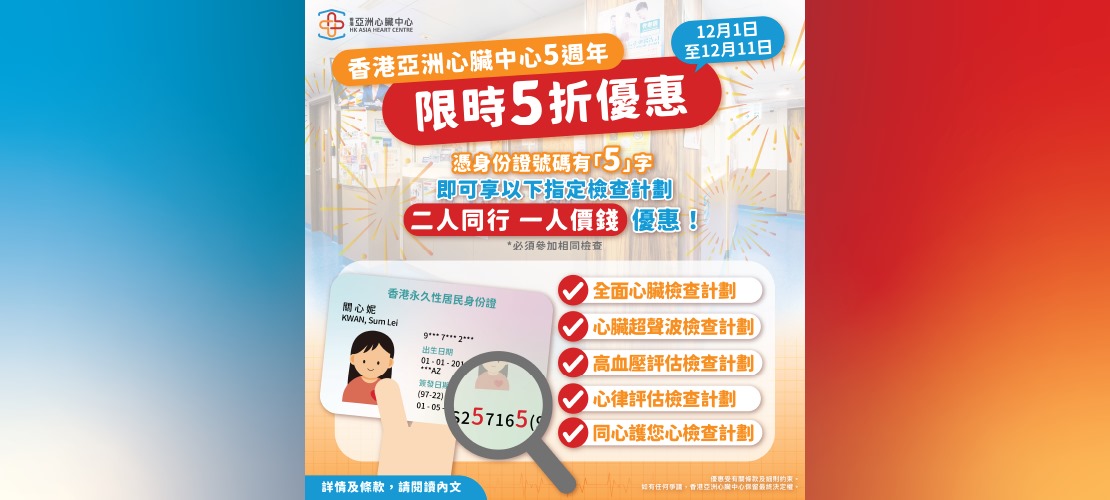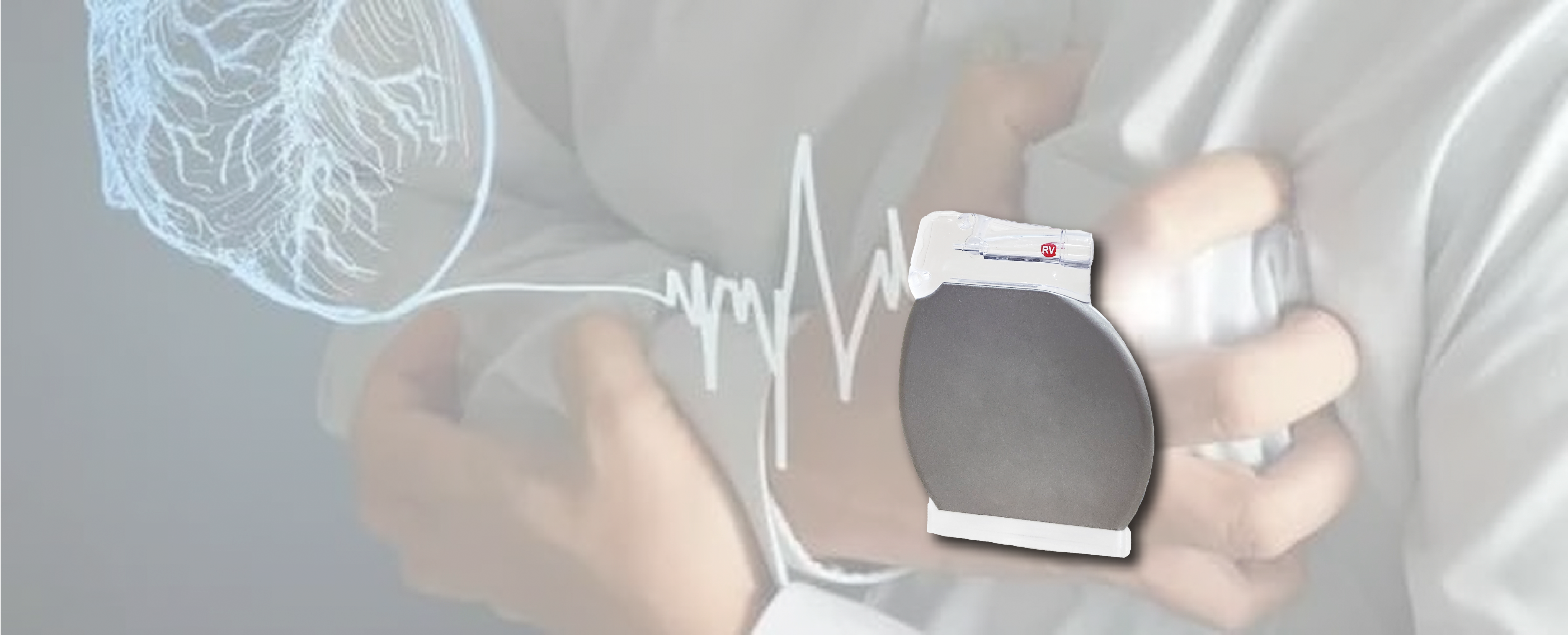Implantable Cardioverter Defibrillator (ICD) | Hong Kong Asia Heart Centre
Heart rhythm is mainly controlled by the conduction system of the heart. Any abnormality in the conduction system may result in abnormal heart rhythm (arrhythmia). Life-threatening arrhythmias such as ventricular tachycardia (VT) and ventricular fibrillation (VF) cause not only palpitations, dizziness and syncope but also sudden death.
Implantable Cardioverter Defibrillator
(ICD) is an implantable device used for treatment of VT and VF. It is
essentially an implantable cardiac pacemaker which consists of a
battery-powered generator and leads that connect the generator to the patient’s
heart. The lead placed in the right heart has defibrillation function. As soon
as a VT or VF is detected, the ICD will automatically try to correct it by
anti-tachycardia pacing, cardioversion or defibrillation. It has been proven in
various clinical trials that ICD is better than the best anti-arrhythmic drugs
in prolonging survival among patients with a high risk of sudden cardiac death
due to VT or VF.
Proccess:
- You may be discharged from hospital a few days after the ICD implantation.
- The wound should be covered with light dressing. Please keep the wound site clean and avoid making the dressing wet during shower. Always change dressing if wet.
- You may need to come back to the clinic for suture removal 1 week after the procedure if any. You may remove the dressing 2-3 days after suture removal.
- Please avoid lifting the affected arm for 1 month and avoid vigorous arm movement in the first week after the procedure.
- You will be arranged to attend regular ICD analysis, re-programming and battery power assessment.
- Please carry your ICD identity card at all times.
- Follow your doctor’s instructions or refer to the information booklet from the ICD company to minimize the risk of pacemaker malfunction due to electromagnetic interference. In general, strong electro-magnetic field or radiofrequency signal will interfere your ICD. Please keep a distance of >15 cm (6 inches) from an active mobile phone. Household electrical or electronic appliance usually does not affect ICD.
- You should report to your doctor or nearby Accident and Emergency Department if you suffer from syncope or electric shocks delivered by the ICD.
- ICD generator will need to be replaced in 3-6 years’ time when the battery is depleted.
After Procedure:
- You may be discharged from hospital several days after the CRT implantation.
- The wound should be covered with light dressing. Please keep the wound site clean and avoid making the dressing wet during shower. Always change dressing if wet.
- You may need to come back to the ward or clinic for suture removal 1 week after the procedure if any. You may remove the dressing 2-3 days after suture removal.
- Please avoid lifting the affected arm for 1 month and avoid vigorous arm movement in the first week after the procedure.
- You will be arranged to attend regular CRT analysis, re-programming and battery power assessment. To maximize the benefits of CRT, the settings will be optimized with the help of echocardiogram.
- Please carry your CRT identity card at all times.
- Follow your doctor’s instructions or refer to the information booklet from the CRT Company to minimize the risk of CRT malfunction due to electromagnetic interference. In general, strong electro-magnetic field or radiofrequency signal will interfere your pacemaker. Please keep a distance of >15cm(6 inches) from an active mobile phone. Household electrical or electronic appliance usually does not affect pacemaker.
- CRT generator will need to be replaced in 5-10 years’ time when the battery is depleted.
Heart rhythm is mainly controlled by the conduction system of the heart. Any abnormality in the conduction system may result in abnormal heart rhythm (arrhythmia). Life-threatening arrhythmias such as ventricular tachycardia (VT) and ventricular fibrillation (VF) cause not only palpitations, dizziness and syncope but also sudden death.
Implantable Cardioverter Defibrillator
(ICD) is an implantable device used for treatment of VT and VF. It is
essentially an implantable cardiac pacemaker which consists of a
battery-powered generator and leads that connect the generator to the patient’s
heart. The lead placed in the right heart has defibrillation function. As soon
as a VT or VF is detected, the ICD will automatically try to correct it by
anti-tachycardia pacing, cardioversion or defibrillation. It has been proven in
various clinical trials that ICD is better than the best anti-arrhythmic drugs
in prolonging survival among patients with a high risk of sudden cardiac death
due to VT or VF.
Proccess:
- You may be discharged from hospital a few days after the ICD implantation.
- The wound should be covered with light dressing. Please keep the wound site clean and avoid making the dressing wet during shower. Always change dressing if wet.
- You may need to come back to the clinic for suture removal 1 week after the procedure if any. You may remove the dressing 2-3 days after suture removal.
- Please avoid lifting the affected arm for 1 month and avoid vigorous arm movement in the first week after the procedure.
- You will be arranged to attend regular ICD analysis, re-programming and battery power assessment.
- Please carry your ICD identity card at all times.
- Follow your doctor’s instructions or refer to the information booklet from the ICD company to minimize the risk of pacemaker malfunction due to electromagnetic interference. In general, strong electro-magnetic field or radiofrequency signal will interfere your ICD. Please keep a distance of >15 cm (6 inches) from an active mobile phone. Household electrical or electronic appliance usually does not affect ICD.
- You should report to your doctor or nearby Accident and Emergency Department if you suffer from syncope or electric shocks delivered by the ICD.
- ICD generator will need to be replaced in 3-6 years’ time when the battery is depleted.
After Procedure:
- You may be discharged from hospital several days after the CRT implantation.
- The wound should be covered with light dressing. Please keep the wound site clean and avoid making the dressing wet during shower. Always change dressing if wet.
- You may need to come back to the ward or clinic for suture removal 1 week after the procedure if any. You may remove the dressing 2-3 days after suture removal.
- Please avoid lifting the affected arm for 1 month and avoid vigorous arm movement in the first week after the procedure.
- You will be arranged to attend regular CRT analysis, re-programming and battery power assessment. To maximize the benefits of CRT, the settings will be optimized with the help of echocardiogram.
- Please carry your CRT identity card at all times.
- Follow your doctor’s instructions or refer to the information booklet from the CRT Company to minimize the risk of CRT malfunction due to electromagnetic interference. In general, strong electro-magnetic field or radiofrequency signal will interfere your pacemaker. Please keep a distance of >15cm(6 inches) from an active mobile phone. Household electrical or electronic appliance usually does not affect pacemaker.
- CRT generator will need to be replaced in 5-10 years’ time when the battery is depleted.


